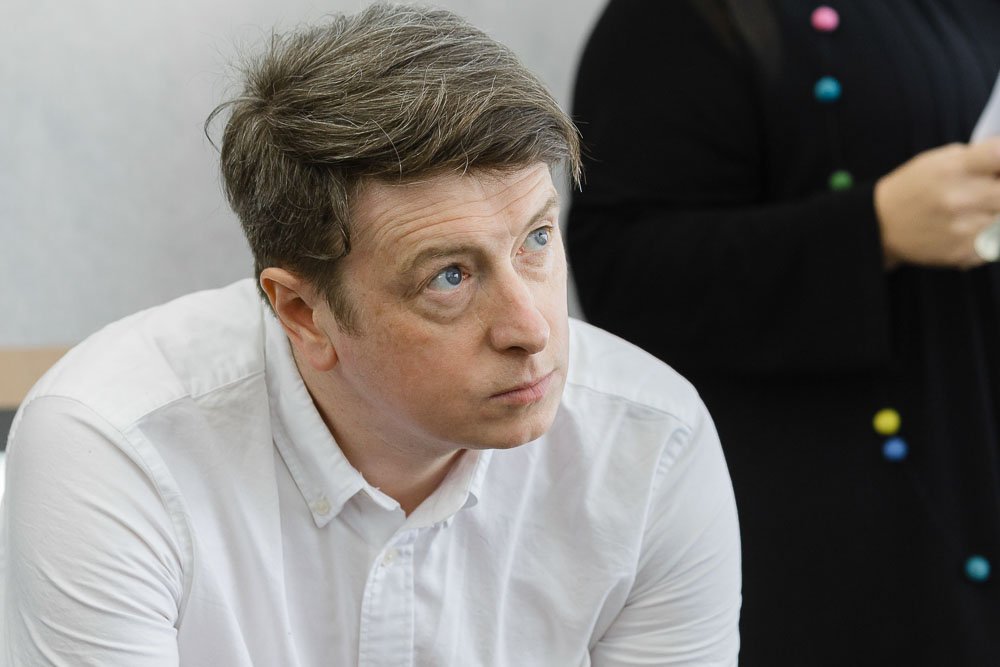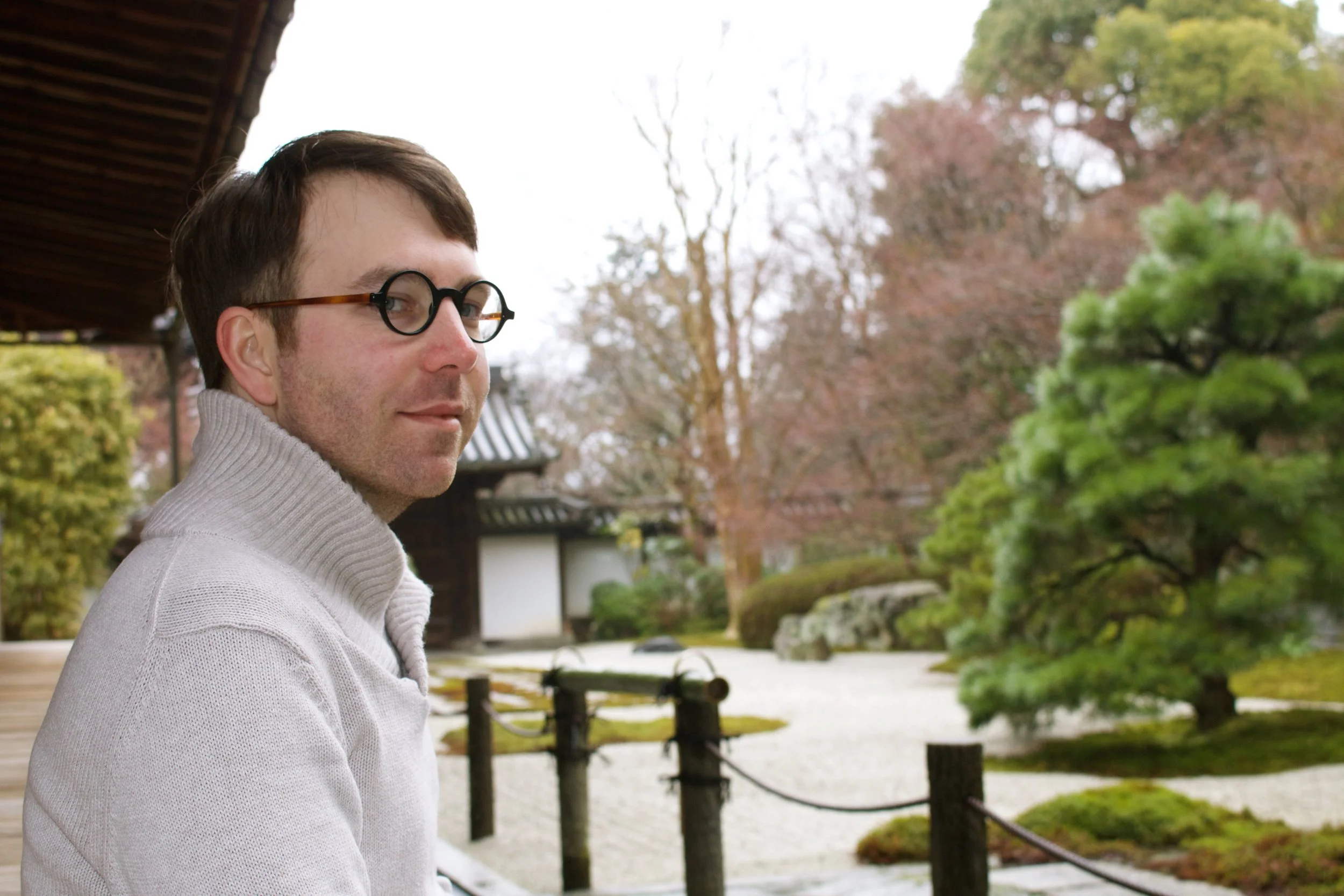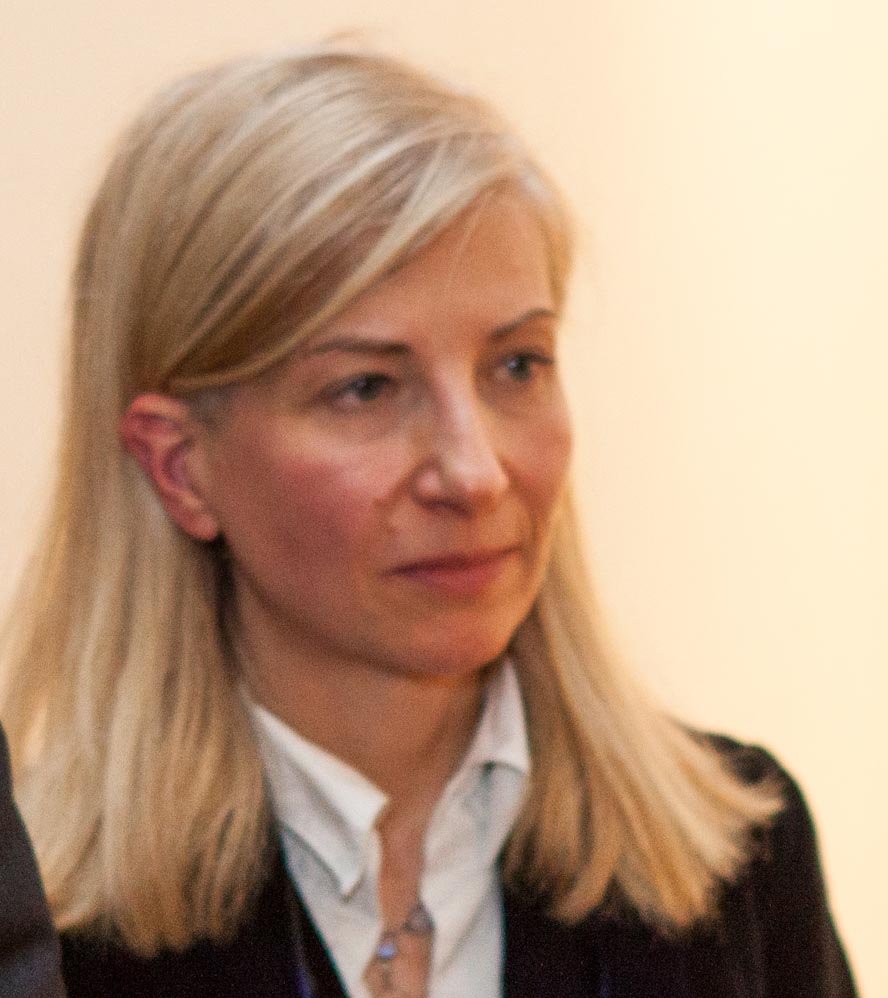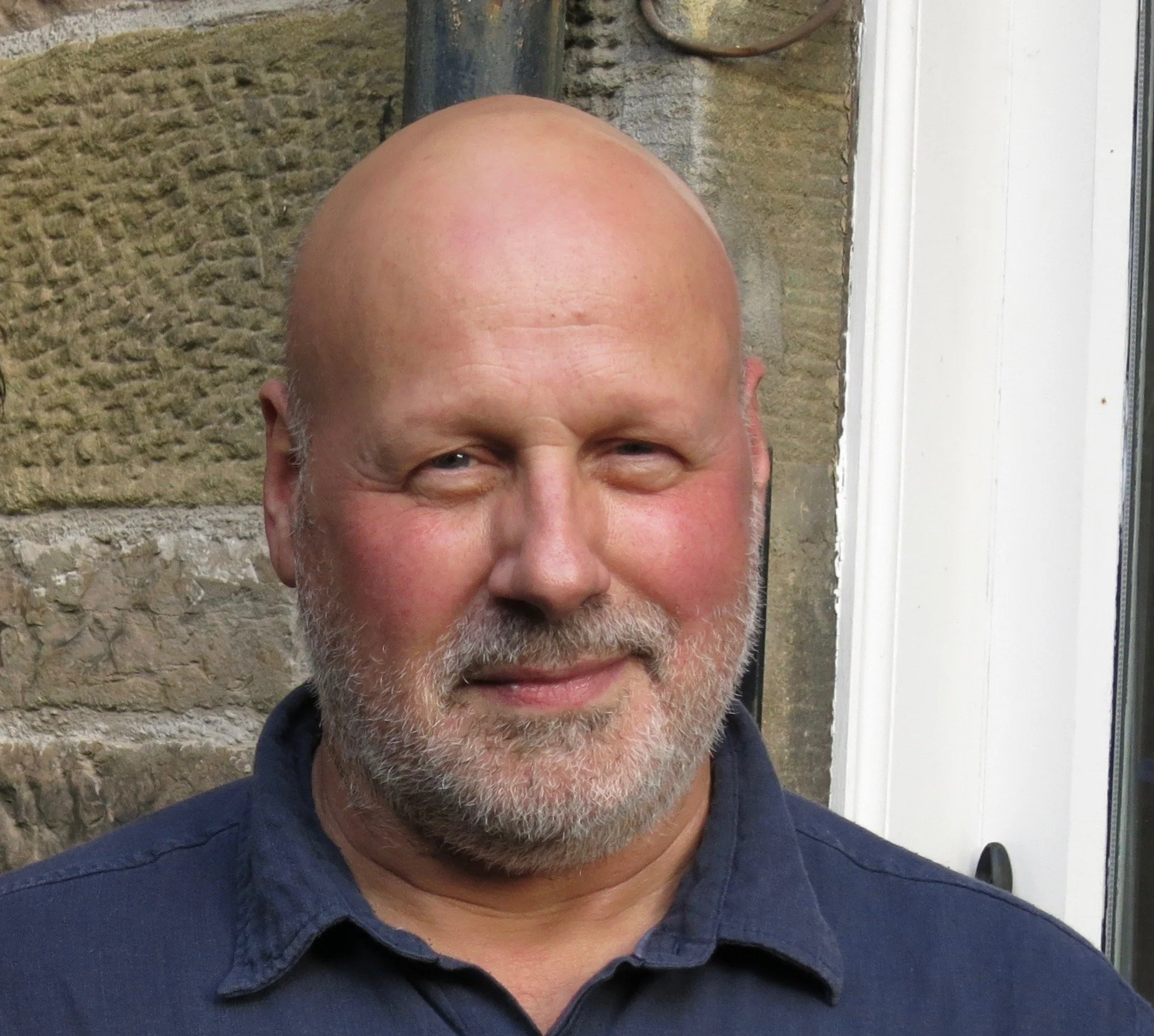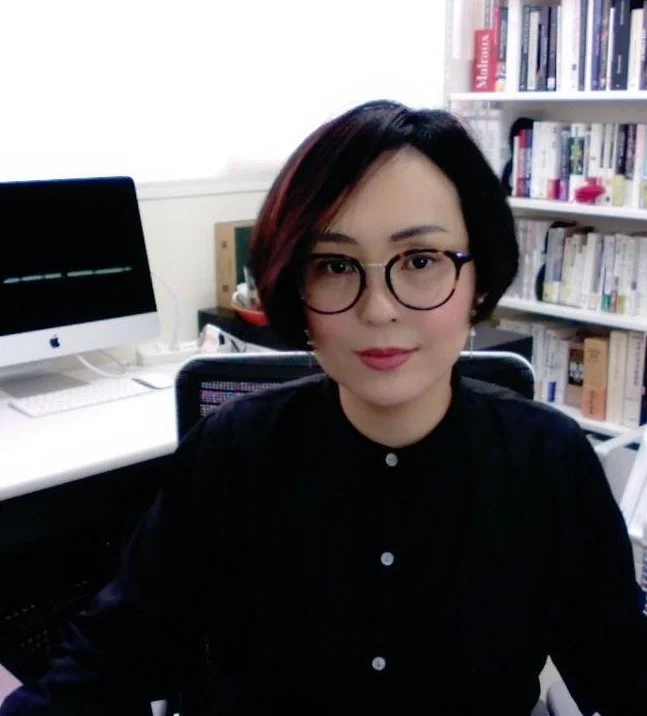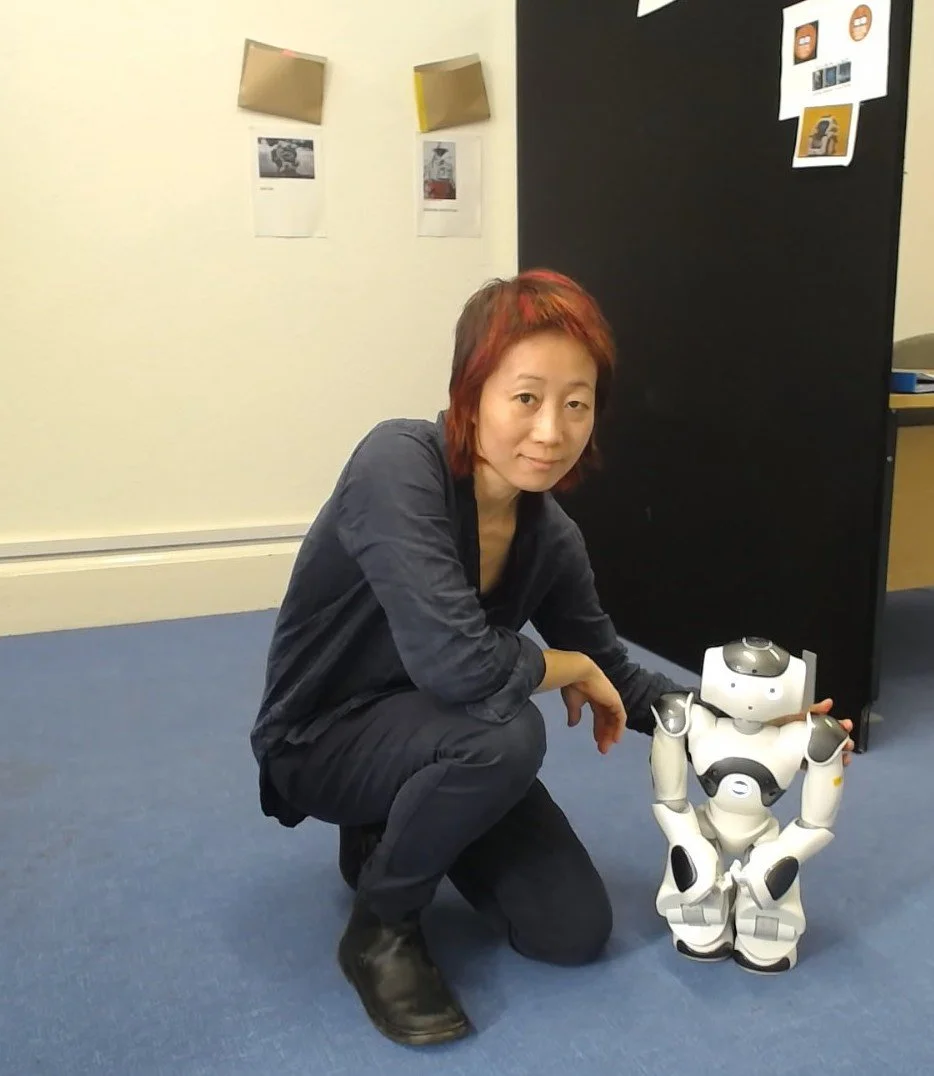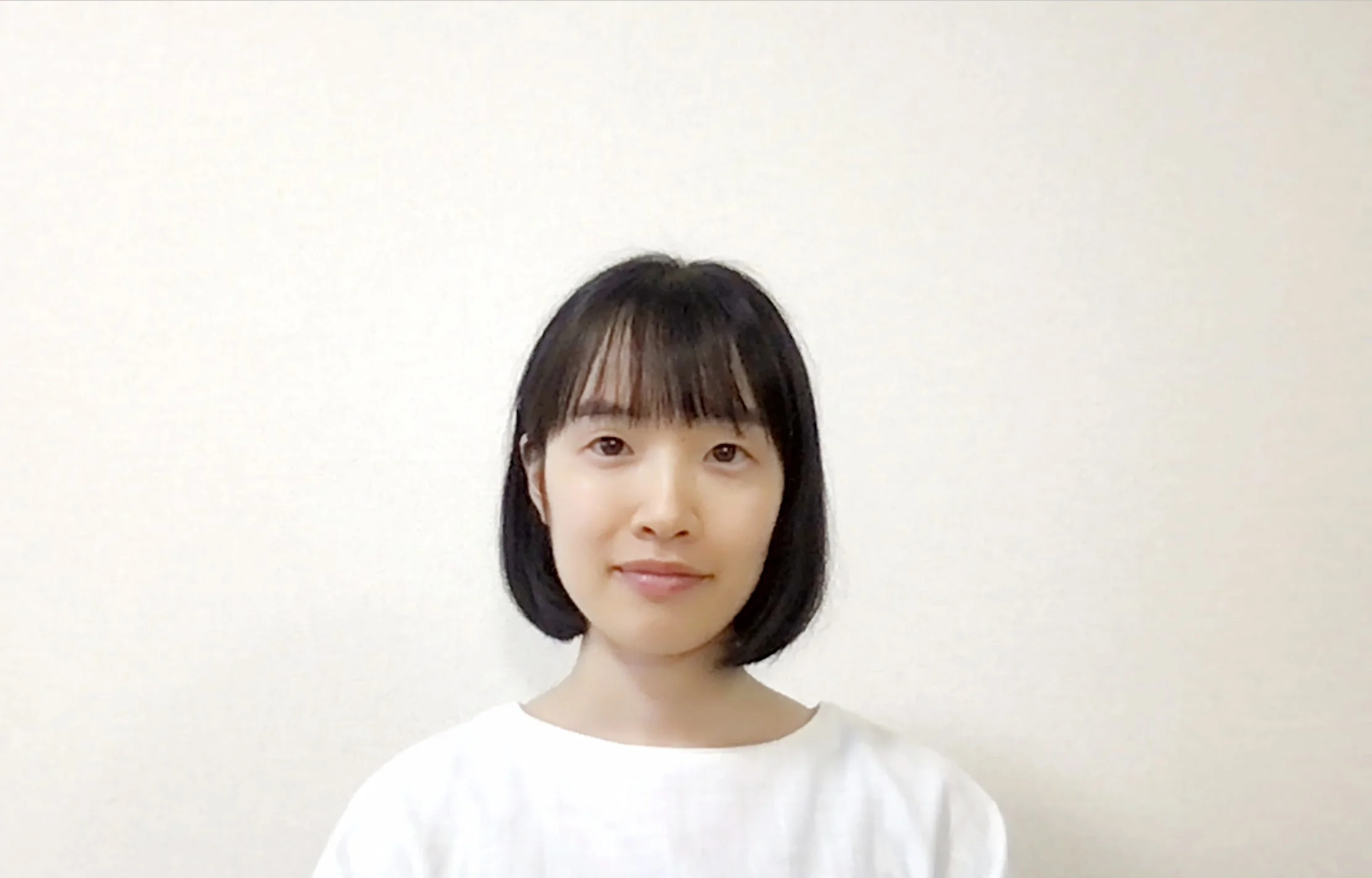Islands in the Global Age: Identification, Estrangement and Renewal in the East-West Dialogue
GLASGOW-KYUSHU INTERNATIONAL CONFERENCE
28 – 30 MARCH 2022, 10am UK time/ 6pm Japan time
ONLINE CONFERENCE & PUBLIC EVENTS
Schedule / スケジュール
DAY 1 – 28 MARCH 2022
10:00 – 10:30 Welcome and introductions from the organisers
(Prof Konstantinos Kontis, Dean for Global Engagement in East Asia, Prof Johan Lauwereyns, Vice President, Kyushu University, Mr Tadashi Fujiwara, Consul General of Japan, Edinburgh, Prof Anselm Heinrich, Arts College International Dean, Dr Ramona Fotiade and Dr Yuko Ishii – joint organisers from Glasgow and Kyushu Universities)"
10:30– 12:30 Spirituality, Music and Performance Art (Chair: TBA)
Dr Graham Eatough (Theatre Studies, University of Glasgow): Floating Worlds: towards an archipelagic dramaturgy
Dr Daryl Jamieson (Faculty of Design, Kyushu University): Zenchiru’s Mekari: Staging Ambiguous and Hollow Worlds
Dr Saeko Yazaki (Theology and Religious Studies, University of Glasgow): ‘A cup of humanity’: the Japanese tea ceremony (the Way of Tea) as portrayed by Okakura Tenshin and its reception and practice in contemporary Britain
Lunch Break
14:00 – 16:00 Urban Art, Architecture and Film (Chair: Dr. Yuko Ishii)
Dr Gloria Yu Yang (IMAP, Kyushu University): Monumentalizing Decolonization: Landmark Transformation in East Asian Cities after 1945
Dr Dominic Paterson (History of Art, University of Glasgow): Gift, Sacrifice, Metamorphosis: transformative tendencies in recent Scottish art
Dr Ramona Fotiade (SMLC, University of Glasgow): Urban Decay and Neverlands in Lynne Ramsay’s and Akira Kurosawa’s Films
17:00 Film streaming (20mins):
Erraid Sound: Floating Worlds by Graham Eatough (University of Glasgow) and Andre Deker with music by Daryl Jamieson (Kyushu University)
DAY 2 – 29 MARCH 2022
10:00 – 11:15 The East-West Dialogue in Painting, Modernist Literature and Travel-Writing (Chair: Dr. Gloria Yu YANG)
Mengru Wu (PhD student, Kyushu University): Japan, China and Matisse: The Figurative Works of Nakagawa Kigen and Ding Yanyong in the 1920s
Anaïs Delcol (PhD student, French/SMLC, University of Glasgow): Peregrination as a conquest and liberation of oneself in female travel writer's works: Isabella Bird and Alexandra David-Néel
11:15 – 11:20 Coffee break
11:20 – 12:50
Prof Tsuyoshi Namigata (Faculty of Social and Cultural Studies, Kyushu University): Routes to the West: Cultural Translation in Japanese Modernist Literature around 1924
Prof Murdo Macdonald (Emeritus, History of Scottish Art, University of Dundee): Traditionalist Modernism in Scotland and Japan: Patrick Geddes, Kakuzo Okakura and Natsume Soseki
Lunch Break
14:00 – 16:00 Futurism, Surrealism and Estrangement (Chair: Ramona Fotiade)
Dr Yuko Ishii (Faculty of Arts and Science, Kyushu University): The Encounters Obscured: Pre-War Japanese Avant-Garde Artists and British Modern Art
Lucy McCormick (PhD student, SMLC, University of Glasgow): Zen and the Headless: Reconciling the Estrangement of Okamoto Taro and Georges Bataille
Dr James Rann (SMLC, University of Glasgow): Lili’s Kilt, Anna’s Kimono: Objective Exoticism in Russia’s Global Modernism
DAY 3 – 30 MARCH 2022
10:00 – 12:00 Global Islands and Virtual Social Interactions
Dr Maki Rooksby (INP, University of Glasgow): Human Robot Proxemics: a UK-Japan cross-cultural study
Dr. Tadaaki Furuhashi (Nagoya University): Hikikomori (social withdrawal) in Japan and France: exploring creative activities for promoting connection back to society
Dr Shiori Emoto (Faculty of Humanities, Kyushu University): Layered Realities in Augmented Reality: How Do We Integrate Foreigness Using Familiar Reality?
Dr Tim Peacock (History Department, University of Glasgow): Morality, Meta, Archmages: Politically constructing new societies in video game Isekai Log Horizon
SPEAKERS’ RESEARCH PROFILES AND PRESENTATION OUTLINES
Spirituality, Music and Performance Art
Dr Graham Eatough
Lecturer in Theatre Studies at the University of Glasgow where he runs the MLitt in Theatre and Performance Practices. He is also one of Scotland’s leading artists working across theatre, visual art and film. His recent work includes creating The Reason I Jump and How to Act both for National Theatre of Scotland, directing Lanark: a life in three acts for Citizens Theatre and Edinburgh International Festival, and the film installation No End To Enderby with artist Stephen Sutcliffe for Manchester International Festival and Glasgow International Festival. Recent awards include the Contemporary Arts Society prize in 2017 and a Fringe First in 2018.
Title: Floating Worlds: towards an archipelagic dramaturgy
This project is a multi-disciplinary exploration of our relationship with the natural environment. The project offers an artistic response to some of today’s most pressing issues: our changing climate, rising sea levels, and an ageing and sometimes isolated population. An international collaboration made during the Covid-19 restrictions, it uses both analogue and digital technologies to tell its story and connect with its audience. The project was created during a residency carried out in the remote coastal landscape and island community of the Ross of Mull, and draws heavily on the artists’ continuing research into Japanese theatre’s relationship with landscape and the natural world. The research for this project is funded by Daiwa Foundation, Rotterdam Centre for Visual Arts and University of Glasgow.
Dr Daryl Jamieson
Assistant Professor of Composition in the Department of Communication Design Science at Kyushu University. Dr Jamieson is principally a composer who works with classical and Japanese instruments, sometimes in combination with field recordings. His research is centred around the aesthetics of nō (especially Konparu Zenchiku) and the constellation of philosophical and religious ideas that fed into the aesthetics of nō, as well as contemporary Japanese philosophy and aesthetics which critically engages with that tradition (especially Ueda Shizuteru). This research leads to outputs in both aesthetics and composition, both of which attempt to answer the question 'how can experimental music (or music theatre) be meaningful in the present (ie. the Anthropocene)?’ by employing interpretive frames which privilege Japanese philosophy and aesthetics over western discourses. http://daryljamieson.com/en/research.html
Title: Zenchiru’s Mekari: Staging Ambiguous and Hollow Worlds
Konparu Zenchiku (1405-c.1470) was the son-in-law of Zeami Motokiyo. Zeami is the most famous nō actor-writer-composer-showman-impressario, but Zenchiku brought nō back from the shōgun’s court to the temples, effectively resacralising the art form for a troubled, violent age. This paper will ask whether Zenchiku’s approach to theatre has anything to teach us as contemporary directors and creators and audiences in our own unstable era. Focusing on the under-appreciated play Mekari – which dramatises a ritual cutting of seaweed at the strait between the islands of Kyūshū and Honshū as the new lunar year dawns – the paper will explore how Zenchiku’s work plays with – crosses back and forth over – multiple physical, temporal, and spiritual boundaries in both its text and performance, leaving the audience with a sense of ambiguity and questioning the received wisdom of conventional reality. The paper will conclude with a look at Kyoto School philosopher Ueda Shizuteru’s concept of the hollow expanse, a place of limitless possibility. The paper will argue that the audience viewing these ambiguities cultivated by Zenchiku’s sacred dramas – via the music, words, and staging together – might themselves be given a glimpse into the radically open place of the ‘hollow expanse’. For us in the late-capitalist world, Zenchiku’s theory and practice of sacralised music drama offers a model of a theatre which communicates with that which lies beyond the boundaries and limits of our conventional human way of thinking – a possibility of moving beyond the instrumental conception of the world that has wrought so much destruction throughout the Anthropocene.
Dr Saeko Yazaki
Lecturer at Theology and Religious Studies at the University of Glasgow, and previously worked at the Centre of Islamic Studies, University of Cambridge, as the Outreach and Project Manager. Her research interests include Sufism, Muslim-Jewish relations in al-Andalus and their continuing and contemporary relevance, Japanese traditions including the dress of Shinto deities, and a comparative study of Sufism and Zen. Recent publications include Islamic Mysticism and Abu Talib al-Makki: The Role of the Heart (2013), ‘Muslim-Jewish Relations in the Duties of Hearts: A.S. Yahuda and his Study of Judaism’ (2017), La chronique japonaise de Nicolas Bouvier (co-authored, 2018), and ‘Scrupulous devotion: the influence of Ibn Hanbal on al-Makki’ (2020). She is currently co-editing The Routledge Handbook of Comparative Mysticism and Sufism and Zen in the West: The Transformation of Modern Religious Life and Practice (to be published by Bloomsbury). She is Chair of the BRAIS (British Association for Islamic Studies)-De Gruyter Prize Committee, Research Fellow at the Institute for Japanese Culture and Classics (Organization for the Advancement of Research and Development) at Kokugakuin University, and Section Editor of the Journal of Open Theology (Islam; Eastern Religions).
Title: ‘A cup of humanity’: the Japanese tea ceremony (the Way of Tea) as portrayed by Okakura Tenshin and its reception and practice in contemporary Britain
This paper examines Chado/Sado (literally the Way of Tea but usually translated as the Japanese tea ceremony) as presented in The Book of Tea (1906) by Tenshin Okakura and its contemporary reception and practice in Britain. Okakura was a great proponent of Asian culture and linked Chado with Japanese aestheticism and morality, calling a cup of tea “a cup of humanity”. Addressed specifically to a Western audience, the book was composed in English and gained great popularity among many Western intellectuals. Written in response to increasing European presence in Asia, Okakura attempted to portray Chado as a comparable philosophy to Western esotericism, while at the same time celebrating Asian culture in relation to Western values. Departing from his original intention, this paper goes on to discuss how Chado is understood in contemporary Britain drawing on interviews with its practitioners. For many, the attraction of Chado seems to lie in its philosophy and connection to the natural world reflected in the use of simple utensils, and elaborate yet practical procedures. Oriental spirituality in the West has taken three main trajectories: removal of the original religious elements, hybridisation with other traditions, and emphasis of the Eastern tradition. It seems that the case of Chado is in the last category since its followers find its unique “Japaneseness” its main appeal. This paper also problematises why the stress of Japaneseness seems to be a success of attracting Western audience to Chado.
Urban Art, Architecture and Film
Dr Gloria Yu Yang
Art historian and architectural historian of modern Japan at IMAP at Kyushu University. Her research focuses on the architecture and urban culture in modern East Asia, in particular, the circulation of people, material, and ideas among Japan, colonial Korea, and China in the first half of the twentieth century. Her current project examines Japanese architectural practice and urban culture in colonial Manchuria (1905-1945). Her broader interests include urban development of modern Japan, colonial modernity, photography and visual culture of the Japanese empire
Title: Monumentalizing Decolonization: Landmark Transformation in East Asian Cities after 1945
During the first half of the twentieth century, the Japanese empire built a series of landmarks and monuments (including shrines, war memorials, public squares, and cultural heritage sites, etc.) in its colonies and occupied regions. After the collapse of the Japanese empire in 1945, these monuments and public spaces became the symbols of a colonial past that the former occupied countries and regions eagerly buried. However, due to the physical persistence of the urban landscape and historical reasons, these monuments were not deconstructed immediately. Instead, each country took various approaches to “decolonize” these places and buildings, to reverse the negative connotations, and to reuse them to authenticate the new regime. This paper examines and compares the process of unmaking the war memorials in Changchun (the capital of the former colonial Manchurian State), Seoul (colonial Korea), and Taipei (colonial Taiwan), within the context of decolonization in East Asia. The examination reveals the differences and similarities in their treatments of the colonial history, as manifested in urban landscape and landmark buildings. Through a half-century urban transformation, Seoul, Taipei, and Changchun have formed distinct urban landscapes, which, interestingly, have formed an archipelago of post-colonial monuments.
Dr Dominic Paterson
Senior Lecturer in History of Art, School of Culture and Creative Arts, and Curator of Contemporary Art at The Hunterian at the University of Glasgow. He has published widely on contemporary art and art theory, including for the journals Performance Research, Théâtre/Public, ARTis ON, &labels, and The Edinburgh Review. His research interests focus on the politics of appropriation and on modes of temporality within contemporary artistic practice, and on the legacies of critical theory, especially the work of Michel Foucault. Dr Paterson has written art criticism for MAP Magazine, The Burlington and Burlington Contemporary (among others) and was a contributor to Edinburgh University Press's Dictionary of Modernism in 2018. Recent publications include The Generous Landscape: Ten Years of Jupiter Artland (2019) and Fellow Traveller (2021), a monograph on the artist Neil Clements. As a curator his exhibitions include solo exhibitions by Ulrike Ottinger, Ilana Halperin, Alex Impey, Neil Clements and Andrew Kerr, and group exhibitions featuring artists such as Tacita Dean, Manthia Diawara, Sharon Hayes, Nalini Malani, Otobong Nkanga, and Simon Starling. From 2016 to 2019 Dr Paterson was Principle Investigator for the multi-institution, EU-funded project 'New Approaches to the Conservation of Contemporary Art' and he is currently the recipient of an Art Fund Moving Image acquisition grant, and the 2021 VNXXCAS grant, awarded by the Contemporary Art Society.
Title: Gift, Sacrifice, Metamorphosis: transformative tendencies in recent Scottish art
This presentation traces the ways in which acts of gifting, destruction, metamorphosis and sacrifice have underpinned some recent work by artists based in or closely associated with Scotland. The contention is that these dynamics are used to reanimate remnants of modernist and postmodernist artistic traditions; traditions that serve as a problematic but alluring genealogy for artists geographically and temporally removed from the centres of canonical modernism. The examples are largely drawn from my own recent curatorial and research projects.
Dr Ramona Fotiade
Reader in French/ SMLC at the University of Glasgow, specialising in the interface between French visual avant-garde and philosophy. Her recent book, Pictures of the Mind: Surrealist Photography and Film (2018) highlighted the relevance of Jacques Derrida’s notions of spectrality and trace, alongside the Freudian theory of the uncanny for assessing the impact of the Surrealist conception of photography and film as mental constructs on prominent post-war trends in art house cinema in Europe, the US and Japan. She is currently seeking to expand her research in the field to encompass the implications of human-robot interaction, and processes of empathetic identification, learning and acquiring of affective memory from a cross-disciplinary perspective in collaboration with colleagues from the Institute of Neuroscience and Psychology (INP) at the University of Glasgow.
Title: Urban Decay and Neverlands in Lynne Ramsay’s and Akira Kurosawa’s Films
This paper will consider the analogous representations of post-industrial urban decay and uncanny spaces in Lynne Ramsay’s Ratcatcher (1999), a coming-of-age story set in a deprived housing estate in Glasgow, in 1973, and Akira Kurosawa’s Dodeska-den (1970), which portrays the life of a shantytown boy who drives an imaginary tram in a world populated by disaffected characters. The role of the child protagonists in both films, as source of cinematic vision at the threshold between reality and dreams, will be examined in relation to Lynne Ramsay’s and Akira Kurosawa’s Surrealist aesthetics, while their use of colour, painterly compositions and texture will be linked to the advent of a distinctively haptic visuality which radically alters our perception of everyday encounters in the destitute suburban areas and wastelands of Glasgow and Tokyo.
The East-West Dialogue in Painting, Modernist Literature and Travel-Writing
Mengru Wu
PhD student at Art Studies, Graduate School of Humanities at Kyushu University. She is writing a dissertation on a Shanghai based modern Chinese female oil painter Guan Zilan (1903-1985) with a focus on art education for women, the appropriation of photographic image in her paintings, and her role serving as a model for Chinese and Japanese male painters.
Title: Japan, China and Matisse: The Figurative Works of Nakagawa Kigen and Ding Yanyong in the 1920s
This presentation explores the issues of East-West Dialogue by examining the reception of Henri Matisse by the Japanese and Chinese modern oil painters, Nakagawa Kigen (1892-1972) and Ding Yanyong (1902-1978). Japan played a unique role in Chinese modern art as many Chinese oil painters learned Western art through Japan. The reception of Matisse by Nakagawa Kigen and Ding Yanyong is a fine example of Japan and China's unique relationships in the modern period.
The Japanese oil painter Nakagawa Kigen is considered one of the earliest artists to engage with Matisse and played an essential role in introducing Matisse's works to the Japanese audience. Nakagawa visited Matisse's studio in Paris in 1919 and learned Matisse's thoughts on art and painted Arabesque while discussing the work with Matisse. After the journey in Europe, Nakagawa published Matisse's Personality and Works in 1922 and submitted Arabesque to one of the well-known exhibitions, Nika-ten, in 1921 and received a prize at the exhibition. By examining Nakagawa's paintings and writings on Matisse, I will discuss Matisse's role in Nakagawa's artistic career and the Japanese art scene in the 1920s.
The Chinese oil painter Ding Yanyong is a renowned artist to have introduced Matisse to China. Ding studied in Tokyo Art School in the 1920s, during which time he had a chance to see Matisse's paintings in French Contemporary Art Exhibitions in Tokyo. Ding also studied Matisse through books, which includes Nakagawa Kigen's Matisse's Personality and Works. By examining Ding's paintings and writings, I will discuss how Japanese artists such as Nakagawa Kigen's understanding of Matisse shaped Ding's view on Matisse as well as Chinese art.
Anaïs Delcol
PhD student in French/SMLC at the University of Glasgow, working on the question of identity and trans-cultural autofiction in the work of three nineteenth century female travel writers (Alexandra David Néel, Isabela Bird and Isabelle Eberhardt). Alexandra David Néel and Isabela Bird both travelled to Japan and documented their journeys through their writing and through photographs. Prior to her PhD, Anaïs Delcol completed a MRes in French Literature at the University of Toulouse Jean Jaurès II, and defended a thesis about the eloquence in political speeches in the nineteenth century. She focused on the place of women in politics through the writer George Sand.
Title: Peregrination as a conquest and liberation of oneself in female travel writer's works: Isabella Bird and Alexandra David-Néel
Prof Tsuyoshi Namigata
Professor at the Faculty of Social and Cultural Studies at Kyushu University. His research interests cover the fields of modern Japanese literature and comparative literature. He published his dissertation as a book Ekkyo no Avangyardo [Border-crossing Avantgarde] in 2005. Recently, he has focused on modernism in East Asia as a historical phenomenon.
Title: Routes to the West: Cultural Translation in Japanese Modernist Literature around 1924
This presentation will provide an opportunity to reconsider the beginnings of modernist literature in Japan. When we say that Japanese modernist literature began in 1924, we tend to imagine the style of Riichi Yokomitsu and Yasunari Kawabata. And Kawabata explained their tendency by referring to Expressionism, Dada. In this sense, Japanese modernist literature seems to have been in contact with the Western literary trends of its time without any time lag. However, the information was minimal, transformed, and sometimes became the target of criticism of Westernization itself. So this presentation will shed light on the works of Sinkichi Takahashi, Joji Tani, and Junichiro Tanizaki, who sought other routes to the West in the age of modernism in Japan.
Prof Murdo Macdonald
Murdo Macdonald is emeritus professor of history of Scottish art at the University of Dundee. He is author of Scottish Art (Thames and Hudson, new edition 2021), Patrick Geddes’s Intellectual Origins (Edinburgh University Press, 2020), and Ruskin’s Triangle (Ma Bibliothèque, 2021). He is an honorary member of the Royal Scottish Academy, and an honorary fellow of the Association for Scottish Literature. He is a trustee of the Scottish Centre of Tagore Studies. He has been linked to work in Yamaguchi since 1995.:
Title: Traditionalist Modernism in Scotland and Japan: Patrick Geddes, Kakuzo Okakura and Natsume Soseki
In my book Patrick Geddes’s Intellectual Origins (Edinburgh University Press, 2020), I considered a number of key thinkers of the early twentieth century to be traditionalist modernists, by which I mean thinkers who were forward looking, but very conscious of the significance of reviving past practices and insights as a guide to future cultural and economic evolution. Among them were the Scottish generalist Patrick Geddes (1854-1932), the Japanese novelist Natsume Soseki (1867-1916) and the Japanese cultural activist Kakuzo Okakura (1863-1913). Geddes was a distinguished scientist who was also at the heart of the cultural movement known as the Celtic revival in the 1890s. Artists in Geddes’s milieu in Edinburgh, in particular Charles Mackie (1862-1920) and Robert Burns (1869-1941), were strongly influenced by the woodcuts of the Japanese artist Utagawa Hiroshige (1797-1858). Similarly, in Glasgow Geddes’s friend Charles Rennie Mackintosh (1868-1928) united modernism, Scottish vernacular, and Japanese influence in his architecture. A key link between these Scottish and Japanese activists was the Irish educator Margaret Noble (1867-1911), better known as Sister Nivedita, who was a friend of both Geddes and Okakura. What I will do here is to look further at these links, drawing on the insights of Kiyoshi Okutsu and Toshihiko Ando, with respect to Soseki and Okakura in relation to Geddes. I will also note the wider network via Nivedita (and later Geddes) in India not least with respect to the pioneering painter Abanindranath Tagore and the art historian and cultural activist Ananda Coomaraswamy. If I have time, I will explore the significance of Boston, Chicago and New York in terms of East-West dialogue, as those cities relate to Geddes, Coomaraswamy and Okakura.
Futurism, Surrealism and Estrangement
Dr Yuko Ishii
Associate Professor of the Faculty of Arts and Sciences at Kyushu University. Her research field is modern art and the historical avant-garde, with particular emphasis on surrealist art in the 20th century. In 2014, she published a book that focused on the works of Max Ernst and his Collage. In 2019, The International Encyclopedia of Surrealism was published from Bloomsbury, to which she contributed articles on surrealism in Japan. Currently, she is engaged in a comparative study of the reception and development of surrealism both in the U.K. and Japan in the interwar period by investigating their international exhibitions and curatorial practice.
Title: The Encounters Obscured: Pre-War Japanese Avant-Garde Artists and British Modern Art
This presentation discusses the interests of Japanese avant-garde artists in British modern art in the 1930s, which has been underestimated compared to that of French and German modern art. There has been extensive literature on the aesthetic dialogue between Japan and Britain after 1850, not only in studies of British Japonism but also in those examining the influence on Japan of British art and its aesthetic and public taste. On the other hand, very little attention has been paid to the interaction between the two countries after the Meiji (1868-1912) and Taisho (1912-1926) periods, particularly in the avant-garde art of the 1930s. While this absence may be partly due to the political difficulties and disciplinary canon of art history at that time, artists who espoused avant-garde movements such as surrealism and abstract art in the 1930s were attracted to contemporary British art through various media, including art magazines and writings of art critics like Herbert Read (1893–1968). Whereas they did not proclaim British art as an overt influence, we can trace resonance between them by closely looking at such artists' activities as Koji Otsuka (1914-1945), whose work I examine as a springboard for this paper. Although this presentation first sets up the framework of 'Japan' and 'Britain', which artists in the thirties had to face, it aims to explore their attempts of going beyond the borders.
Lucy McCormick
PhD student in French/ SMLC at the University of Glasgow, writing a thesis on the interaction between Georges Bataille’s work and Buddhist traditions.
Title: Zen and the Headless: Reconciling the Estrangement of Okamoto Taro and Georges Bataille
Renowned Japanese artist Okamoto Tarō’s time in interwar Paris (1929 – 1940) put him at the heart of some of the most formative artistic and intellectual events of the French avant-garde. During this period, he formed a particularly close friendship with writer and thinker Georges Bataille, becoming centrally involved in one of the latter’s most pivotal projects: the secret society Acéphale (literally: ‘headless’). Acéphale’s stated aim was the creation of a new religion founded on silent, solo meditation, as part of which I argue that Bataille drew on Zen Buddhist practices. Scholars have noted that Okamoto’s relationship with Bataille had a lasting impact on his work after his return to Japan, from recurring themes of social rupture, magic, fire and explosion to the headless imagery of the famous Tower of the Sun (1970). In spite of this, Anglo- and Francophone scholarship has left the opposite flow of influence – from Okamoto to Bataille – untouched, creating a false sense of estrangement between the pair’s ideas during the interwar period. This paper aims to reconcile this ‘estrangement’. I first show a chronological correlation between Okamoto’s initiation to Acéphale and a shift in the society’s meditation practices from Christian-dominated to Buddhist-influenced. I then bring Okamoto’s 1970s French essays into anachronistic conversation with Bataille’s late-1930s output, to propose a fresh understanding of Acéphale’s activities. Central to this reading is a strong Zen Buddhist influence, suggesting Okamoto as a conduit for the wealth of Zen themes emerging not only in Acéphale but across Bataille’s work through the late 1930s and beyond.
Dr James Rann
Lecturer in Russian at the University of Glasgow. His research focuses on the culture of the early 20th century Russian avant-garde, and particularly on Futurist poetry. He is the author of The Unlikely Futurist: Pushkin and the Invention of Originality in Russian Modernism (University of Wisconsin Press, 2020). Previous projects in this area have explored questions of poetic mythology, originality, memoirs and Russia's place in global modernism. He is currently planning two new research projects: one on the role of clothes and fashion in Russian revolutionary art and culture and one on the translation of Russian poetry in Scotland.
Title: Lili’s Kilt, Anna’s Kimono: Objective Exoticism in Russia’s Global Modernism
What better way to understand Scotland and Japan than by viewing them from a position halfway between? In this paper I will use early twentieth-century Russia as an intermediate vantage point from which to discern the outline of a comparative analysis of the function of Scotland and Japan – both as places and as ideas – within global modernism. I will take as my starting point two items of clothing worn by key figures in Russian literary bohemia: the first is a kimono given to the poet Anna Akhmatova in 1927 by her husband, the critic Nikolai Punin, after a trip to Japan; the second is a kilt worn by Lily Brik, the partner of poet Vladimir Maiakovskii, at a famously avant-garde New Year’s Eve party in Petrograd in 1916. I will tell the story of these “exotic” garments both in material and symbolic terms – as gifts brought from abroad, but also as well-established metonyms for their countries of origin and, as such, as symbols of wider intercultural relationships and keys to broader cultural questions of both regional and planetary significance. Experimental modernists had reopened the age-old issue of Russia’s liminal position between Europe and Asia: how do these objects, their attendant invented traditions and their physical and symbolic transformations in the Russian capital expose the contours of that debate? Seen from Russia, and seen through iconic pieces of clothing, what congruences can we discern in the image of Japan and Scotland in global modernism? Finally, how can such a materially and geographically grounded perspective inform the way we look at modernism as an intangible global phenomenon?
Global Islands and Virtual Social Interactions
Dr Maki Rooksby
Research Associate at School of Psychology at the University of Glasgow. Maki currently works for Social Robots project, funded to Professor Emily Cross by European Research Council (ERC). The presentation will share one of their studies in the project. Maki also contributes to two other UK-Japan collaboration projects: one on hikikomori, a severe and enduring form of social withdrawal with Dr. Furuhashi (see below), and the other on parenting practices in Japanese and UK families. Previous work includes investigation of a sensor-enabled tangible toy to address child anxiety, and development of a prototype of automatic measurement tool for attachment relationships in children.
Title: Human Robot Proxemics: a UK-Japan cross-cultural study
Research on interpersonal distances, known as proxemics, suggests that the nature of relationship between interaction partners is reflected in the distance between them, and is influenced by demographic and cultural factors. For example, the UK and Japan are both considered ‘non-contact’ cultures during social interaction. However, there are distinct differences between them; while bowing is a form of greeting in the Japanese culture, hand shaking is an equivalent behaviour in the UK culture. The extent to which such knowledge applies during human—robot interaction (HRI), has not been well studied. We developed an online task to investigate cross-cultural proxemics during HRI between a group of Japanese (N=46) and UK (N=44) participants. The task, which was developed as a coping strategy for the restrictions due to the COVID pandemic, presented video clips of a NAO robot (Aldebaran/Softbank) walking towards the camera. We manipulated the angle of the traversing trajectory of the robot and its speed, the height of the camera, as well as the background scene of the video. The analysis so far of the UK sample suggests that the angle of approach was the single factor most influential for proximity responses: participants indicated the largest distances for video clips depicting the robot approaching in a straight trajectory. The pattern of the result is consistent with “equilibrium hypothesis” (Bailenson et al., 2001), which posits that one’s preference for interpersonal distances is in an inverse relationship with the perception of social engagement with the other interlocutor. In the presentation, we will report analysis from the Japanese arm of the study as well as the overall analysis on a cross-cultural level; we will discuss the degree to which cultural group memberships may manifest in online judgements of an approaching robot, as well as the conceptual viability of studying proxemics in the task developed.
Dr Tadaaki Furuhashi
Associate Professor at Nagoya University and a psychiatrist responsible for the mental health of the Nagoya University’s students. Tadaaki is also a researcher at the university’s Research Center of Health, Physical Fitness and Sports and a responsible in the Department of Psychopathology and Psychotherapy, Graduate School of Medicine. His field of specialty is the clinical study of Hikikomori (a form of social withdrawal) in Japan and France.
Title: Hikikomori (social withdrawal) in Japan and France: exploring creative activities for promoting connection back to society
According to the Japanese Ministry of Health, Labour and Welfare, Hikikomori (social withdrawal) is “a phenomenon in which persons become recluses in their own homes, avoiding various social situations (e.g., attending school, working, having social interactions outside of the home, etc.) for at least six months.” While it is known that Hikikomori may go out sometimes, these are for non-social reasons; the mental state of social withdrawal, along with the associated functional impairment and mental distress are maintained regardless. In principle, Hikikomori is considered a non-psychotic condition distinguished from social withdrawal due to symptoms of schizophrenia.
Recently, there has been reports that “Hikikomori” are identified not only in developed countries in Asia such as Japan and South Korea, but also in Europe, such as Italy (Ranieri 2015, Ranieri 2018), Spain (Garcia-Campayo 2007), Ukraine (Frankova 2017) and France (Furuhashi 2013, Furuhashi 2014, Furuhashi 2015, Furuhashi 2017, Chauliac 2017). Since 2011, I have been giving lectures about those affected by Hikikomori as well as Hikikomori as a mental health phenomenon in France; since 2017, I have been visiting French Hikikomori at their homes in order to engage with them directly.
In my clinical work, I typically find that Hikikomori in both Japan and France are absorbed in games and anime via the Internet. However, the majority of them are passive consumers of such media, even when there are opportunities for them to contribute their own posts or creations. In my presentation, I will share the process of encouraging them to re-connect with society via creative activities, and reflect on the meaning of such activities for their journey to recovery.
Dr Shiori Emoto
Postdoctoral Research Fellow at the Faculty of Humanities at Kyushu University. Her research interests are in the theory of photography, especially theorizing about the nature of photography and what kinds of experiences it enables us to have. The present study provides a new explanation of how viewers can believe a photograph to be real, not by describing the image-making process of film photography, but by revealing the process of viewing a photograph. This study suggests that a photograph conveys only visual information and the viewer reconstructs reality by integrating relevant information.
Title: Layered Realities in Augmented Reality: How Do We Integrate Foreignness Using Familiar Reality?
Augmented reality (AR) is a visual technology that allows the visualisation of unseen reality by layering fictional or possible realities on a visual image of a scene. AR users simply have to hold their smart phones in front of their eyes to see AR-generated images. Images of layered realities allow us to be present while encountering things that are fantastical or non-existent.
Using AR as an example, this study examines the mechanism of how we integrate foreignness using familiar things. Assuming that the familiarness found in AR is actual reality or the state of being absorbed into reality, foreignness means fictional or possible realities displayed by AR. For example, it is necessary for an AR system to grasp users’ location, i.e., familiar reality, correctly and evolve the foreignness by following predetermined rules for integrating these two kinds of realities. This study answers the question “How do we integrate foreignness using familiar reality?” by comparing the relationship between foreign and familiar realities with other phenomena, such as appreciation of artwork inside and outside museums.
Foreignness is not only a matter relevant to AR but also to everyday life. In many cases, it is trivial and a temporal state that is turned into familiarness immediately, but in some cases, it can be a factor which reshapes local or pre-existing constructs over time, like foreign cultures or social systems, new ways of thinking and innovative technologies. The acceptance of foreignness in AR experiences can be a starting point for understanding various sociocultural dialogues.
Dr Tim Peacock
Lecturer in History ath the University of Glasgow, Co-Director/founder of the University’s cross-disciplinary Games and Gaming Research Lab (UofGGamesLab). He is Principal Investigator for funded projects from Access to Wargaming in Education (AWARE) and gaming new approaches to global challenges (Gamestorm) to examining the Earth environmental impacts of Space Debris. His research ranges across different areas including nuclear, spaceflight and space security, games/wargaming, and politics.
Title: Morality, Meta, Archmages: Politically constructing new societies in video game Isekai Log Horizon.


